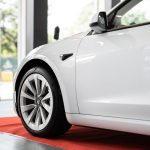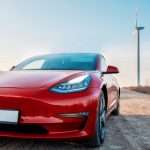San Francisco’s streets are seeing the arrival of a new player in urban mobility with Zoox, the autonomous vehicle company, launching its Zoox Explorers program. With this move, Zoox is inviting local residents to test its purpose-built robotaxi for free, offering the public a first-hand experience with driverless transportation. Many hope that initiatives like this could reshape commuting culture, enabling smoother point-to-point travel close to homes, workplaces, and local businesses.
Compared to similar announcements made earlier this year when Zoox introduced its autonomous ride-hailing service in Las Vegas, the San Francisco program is more focused on public input and gradual service rollout through collaborations with community partners. When Zoox first tested vehicles in the city, operations were largely limited to specific districts and utilized safety drivers. The current launch, however, reflects expansion in coverage and direct public engagement, diverging from initial, closely monitored pilot runs seen in cities like Las Vegas and Los Angeles. While competitors such as Waymo have already accumulated millions of autonomous miles, Zoox’s emphasis on a custom-designed vehicle sets it apart in strategy and presentation.
What Is the Zoox Explorers Program?
The Zoox Explorers program enables selected San Franciscans to experience autonomous rides at no cost, providing a platform for feedback on the service. Early testers gain access via a waitlist, which requires downloading the Zoox app for iOS or Android devices. These rides are meant to help refine the Zoox experience before city-wide expansion.
How Do Riders Access and Use the Service?
Riders within San Francisco’s SoMa, Mission, and Design District areas can set their pick-up and drop-off points through the Zoox app, choosing among destinations or by selecting specific addresses. The system is point-to-point, guiding passengers both by route and, if necessary, by providing walking directions after drop-off. Zoox’s arrangement with local businesses, such as Tartine Manufactory, also integrates local commerce, allowing employees and patrons first-hand riding opportunities.
What Sets the Zoox Robotaxi Apart?
Unlike converted conventional vehicles, the Zoox robotaxi is custom-built for autonomous operation and lacks traditional driving controls such as steering wheels and pedals. Its design facilitates seating for passengers to face each other, aiming for a more communal experience. CEO Aicha Evans described the vision:
“It’s our home. A city of innovation and progress, with an amazing mobility ecosystem that we feel Zoox can really complement.”
This bespoke approach highlights their efforts to distinguish their offering from others in the sector.
Zoox faces significant competition in the U.S. robotaxi market, primarily from Waymo, which boasts 100 million autonomous miles and millions of paid rides. While Waymo continues expanding to new cities, Zoox is betting on both the uniqueness of its vehicle and the direct involvement of residents to inform service improvements. The company’s founder, Aicha Evans, emphasized local enthusiasm, stating:
“We have seen incredible interest in Zoox in this market and are excited about this first step to bring our purpose-built robotaxi experience to more people.”
Urban travel in San Francisco is receiving renewed attention through technology-driven services like Zoox’s. Those interested in participating in the Zoox Explorers program can join via app registration and, if selected, ride at no cost in the designated service area. For city dwellers unfamiliar with autonomous mobility, these rides provide an introduction to what daily commutes could look like as robotaxi deployments grow. For readers, staying informed about pilot programs like Zoox’s helps provide perspective on shifting transportation options and the importance of user feedback in developing new mobility services. Understanding the differences between vehicle platforms—purpose-built versus retrofitted—can also shape opinions when considering trust, comfort, and reliability in autonomous ride-hailing. As new entrants test the waters in busy markets, continued observation of partnerships and rider experiences will be key in forecasting adoption rates.










